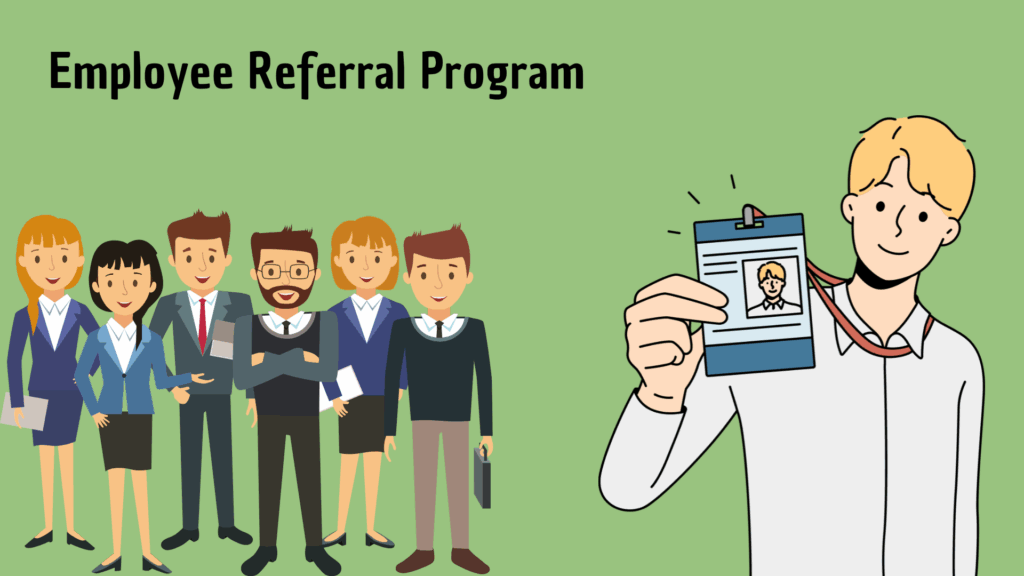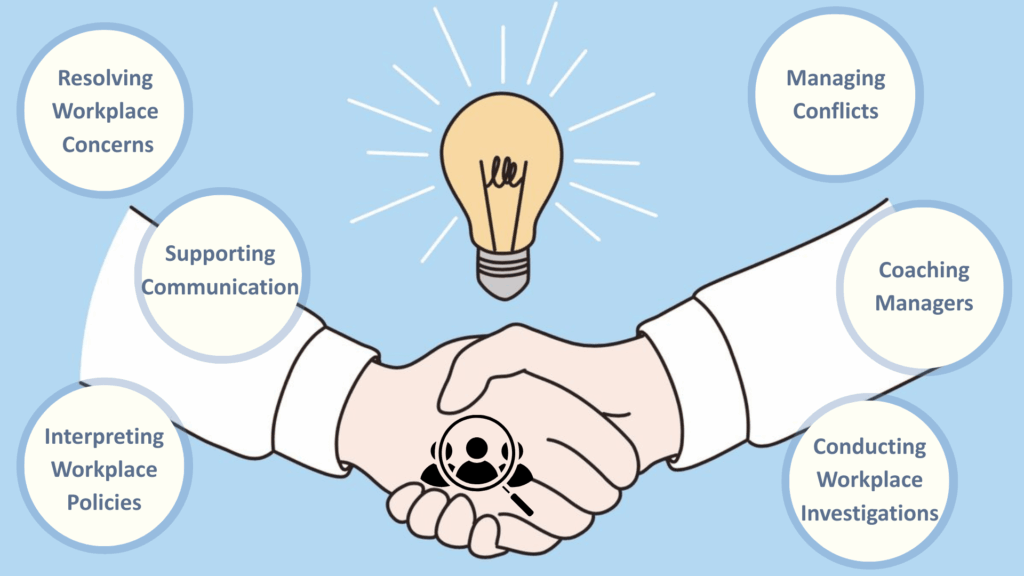Hiring the wrong person can cost your company up to $240,000 in lost productivity and replacement expenses.
What if there were a recruitment method that dramatically reduces these risks while connecting you with top-tier talent?
Employee referrals offer a powerful solution, turning your current team into a network of talent scouts who understand exactly what your company needs.
These recommendations aren’t just introductions; they’re strategic pathways to finding professionals who fit perfectly with your organizational culture and goals.
In this blog, you can find the employee referral meaning, its benefits, and many more helpful resources related to employee referrals backed by examples.
What is the Meaning of Employee Referral?
An employee referral means that when a current employee recommends someone from their network for a job at their organization.
This could be a friend, relative, or former colleague who they believe would be a great fit for the role.
The idea is simple: employees understand the company’s culture and needs, so their referrals are often strong matches.
It’s one of the most trusted forms of recruitment because it’s based on personal and professional recommendations rather than traditional advertising.
Employee referral example: if a marketing associate knows a talented copywriter looking for work, they can refer that person to their company’s open role. If the referred candidate gets hired, the referring employee might receive a cash bonus, gift card, or extra time off as a thank-you.
Types of Employee Referrals
| Type | Description | Example |
|---|---|---|
| Internal Referral | When an employee refers someone already working within the same company to another department or role. | An HR assistant refers a marketing coordinator for an internal transfer to the HR department. |
| External Referral | When an employee refers someone from outside the company. | A designer refers a friend who works at another firm for a UX design position. |
Benefits of Employee Referrals
1. Better Quality Hires
Employee referrals often lead to stronger, more reliable hires.
When employees recommend someone, they usually choose individuals whose skills, personality, and work ethic match the company’s expectations.
Because the referrer already understands what it takes to succeed in the organization, their recommendations tend to be more accurate and effective than random applicants from job boards.
2. Faster Hiring Process
Recruiting through referrals saves time for both the HR team and hiring managers.
Referred candidates are typically pre-screened by employees, so they already meet many of the role’s basic requirements.
This shortens the time spent reviewing resumes and conducting initial interviews, helping the company fill roles much faster.
3. Lower Recruitment Costs
Traditional recruitment methods like paid job postings, agency fees, and advertisements can quickly add up.
With referrals, companies can reduce those expenses.
The only cost involved might be a referral bonus, which is often far less than external hiring costs.
This makes referrals one of the most budget-friendly recruitment strategies available.
4. Higher Employee Retention
Referred employees tend to stay with a company longer.
They already know someone within the organization, which makes it easier to adapt and feel connected from day one.
The existing relationship helps them integrate faster and build stronger loyalty, resulting in lower turnover rates over time.
5. Improved Cultural Fit
When employees refer people from their personal or professional networks, they’re often recommending those who share similar values and attitudes.
This leads to better team chemistry and a stronger cultural fit, which directly impacts collaboration and overall workplace harmony.
6. Increased Employee Engagement
Referral programs give employees a sense of involvement in the company’s growth.
When their referrals succeed, employees feel proud of their contribution to building a great team.
Recognizing their efforts through bonuses, shout-outs, or small perks can also boost motivation and overall engagement.
7. Strengthened Employer Brand
When employees actively refer others to join their company, it reflects positively on the organization’s reputation.
It shows that people enjoy working there enough to recommend it to others.
This kind of organic advocacy can help attract top talent and enhance the company’s brand image in the job market.
8. Smoother Onboarding Experience
Referred employees typically adjust faster because they already have a contact inside the company who can help them settle in.
This built-in support system makes the onboarding process easier and promotes quicker productivity.
Disadvantages of Employee Referrals
1. Risk of Favoritism or Bias
One of the most common issues with referrals is bias. Employees might refer friends or family members who aren’t the best fit for the job.
If not handled carefully, this can lead to unfair hiring practices and even resentment among team members.
2. Reduced Diversity
Referrals often come from an employee’s existing network, which may not be diverse.
Relying too heavily on referrals can unintentionally limit diversity and inclusion, especially if employees refer people with similar backgrounds or experiences.
3. Potential Conflicts of Interest
When friends or relatives work together, personal relationships can sometimes interfere with professionalism.
Disagreements or performance issues might create uncomfortable situations for both the referrer and the company.
4. Limited Reach
Employee referrals usually work best within existing networks, but those networks only go so far.
Depending solely on referrals might limit the company’s access to fresh talent, especially in specialized industries or when scaling rapidly.
5. Inconsistent Quality
Not all employees understand the job requirements well enough to identify ideal candidates.
This can lead to inconsistent referral quality, with some candidates excelling and others falling short of expectations.
6. Administrative Challenges
Tracking referrals, managing incentives, and ensuring fairness can be time-consuming for HR teams.
Without proper tools or systems, it’s easy to lose track of submissions and payments, creating confusion or dissatisfaction among employees.
7. Possible Workplace Tension
If a referred candidate doesn’t perform well or fails to meet expectations, it can create tension between the referrer, the new hire, and the team. This can also discourage employees from making future referrals.
How Does the Employee Referral Process Work?
The employee referral process usually follows a few straightforward steps:
| Step | Description |
|---|---|
| Job openings shared internally | The company announces open positions through internal channels such as email, HR software, or employee portals. This ensures that everyone has access to current job opportunities. |
| Employees submit referrals | Interested employees share information about a friend, colleague, or acquaintance who fits the role. They typically submit details through a referral form or HR system. |
| Recruiters evaluate the referral | The HR team reviews the referred candidate’s resume and qualifications just like any other applicant to ensure they meet the job requirements. |
| Interviews and selection | Qualified referrals are invited to interview and progress through the standard hiring stages, including assessments and manager reviews. |
| Reward and feedback | If the referred candidate is hired, the referring employee receives a reward, such as a cash bonus or extra time off, and feedback about their referral. |
Tips for Effective Employee Referrals
- Make it easy: Provide a simple online form or referral link.
- Keep communication open: Update employees on the status of their referrals.
- Offer meaningful incentives: Cash bonuses, recognition, or small perks work well.
- Encourage diversity: Ask employees to think beyond their immediate social circles.
- Celebrate success: Highlight successful referrals in company meetings or newsletters.
What is an Employee Referral Program?

An employee referral program is a structured system that encourages and rewards employees for referring qualified candidates.
It formalizes the process by outlining how to submit referrals, what rewards are offered, and how success is measured.
The program’s goal is to motivate employees to recommend people who align with the company’s values and goals.
For example, a company might offer a $1,000 bonus for every successful referral who completes six months of employment. Others might give gift cards, public recognition, or even extra vacation days.
How to Build an Employee Referral Program?
Creating an effective referral program involves planning, communication, and consistency. Here’s how to build one step by step:
-
Set clear goals: Define what you want to achieve, such as faster hiring, better candidate quality, or improved retention.
-
Develop a referral policy: Outline who can participate, how referrals are made, and what rewards apply.
-
Design appealing incentives: Offer bonuses or perks that feel fair and motivating.
-
Use tracking tools: Implement an applicant tracking system (ATS) or HR software to monitor referrals.
-
Promote the program: Share success stories and reminders in meetings, emails, and internal platforms.
-
Review and refine: Collect feedback from employees and measure outcomes to improve the program over time.
Conclusion
Employee referrals represent a strategic approach to hiring that goes beyond traditional recruitment methods.
When implemented thoughtfully, these programs can transform how companies find and attract talented professionals.
By leveraging existing employee networks, organizations create opportunities for growth, connection, and mutual success.
Ready to make your hiring process more effective?
Consider discussing referral strategies with your team.
Have you had success with employee referrals? Share your insights in the comments and help other professionals learn from your experience.










